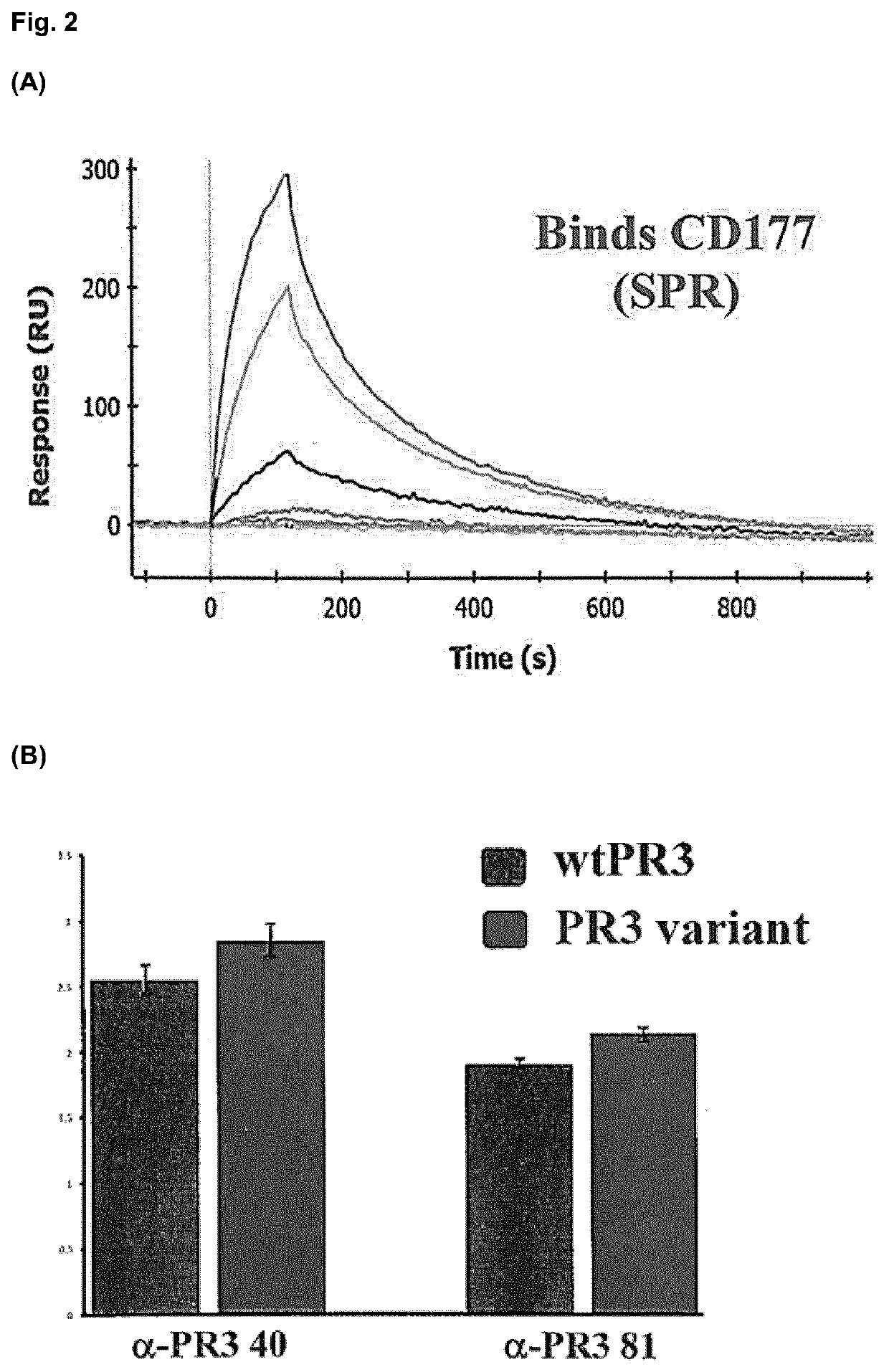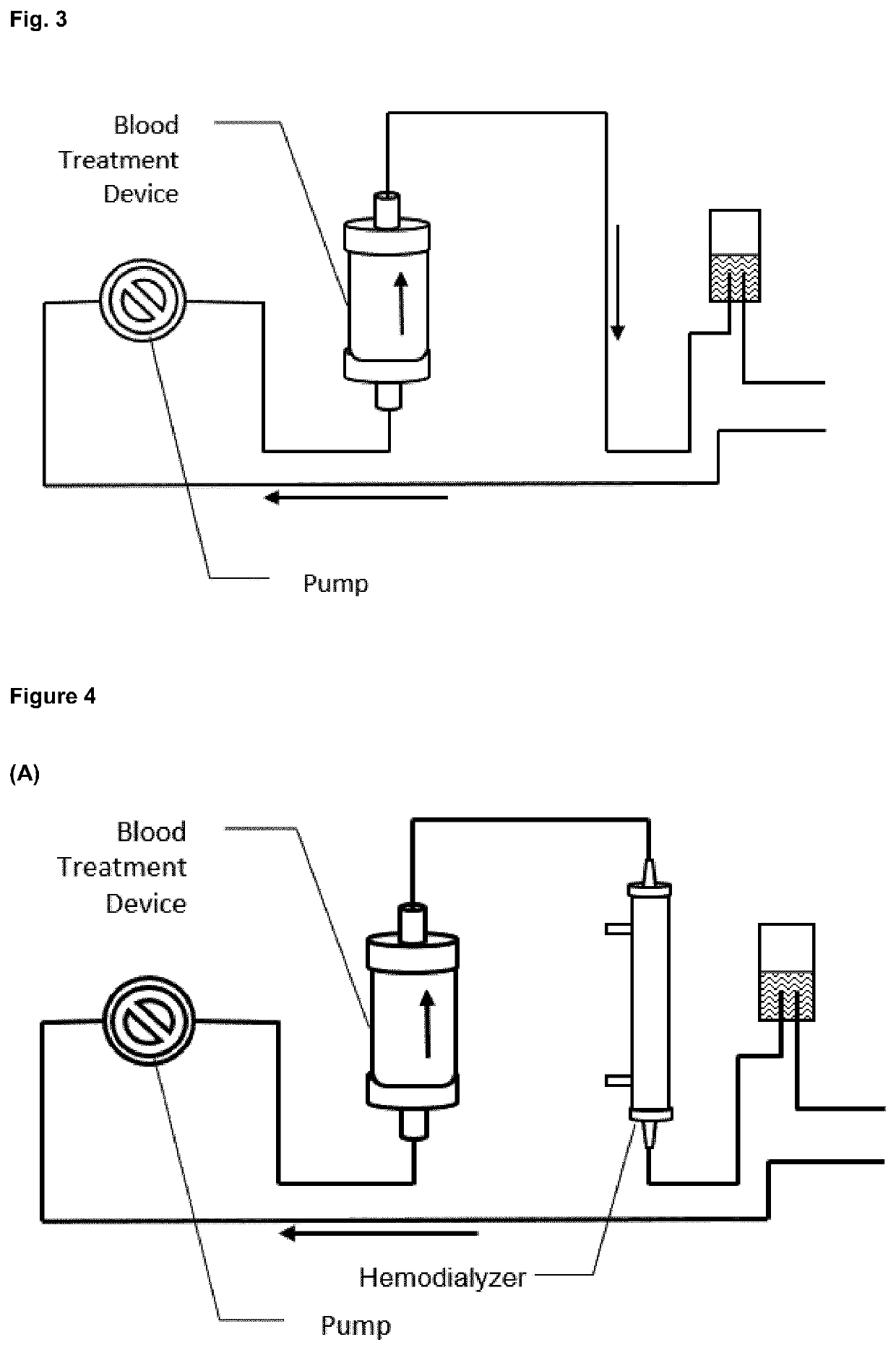Extracorporeal devices for methods for treating diseases associated with Anti-neutrophil cytoplasmic antibodies
a technology of cytoplasm and extracorporeal devices, which is applied in the direction of haemofiltration, other medical devices, peptide/protein ingredients, etc., can solve the problems of severe disability or death, damage to healthy surrounding tissue, and tissue damage, so as to reduce aggregation behavior and reduce oligomerization
- Summary
- Abstract
- Description
- Claims
- Application Information
AI Technical Summary
Benefits of technology
Problems solved by technology
Method used
Image
Examples
example 1
n of Monomer PR3 Protein Variants
[0175]Monomeric PR3 protein variants were created essentially as described in Jerke et al (2017, Scientific Reports 7:43328). The proteins were produced from plasmid pTT5 as C-terminal fusions with a human Ig1 Fc, secreted from 293_6E EBNA cells (NRC, Canada) via an N-terminal Ig1 secretion signal peptide and purified from the culture supernatant by passage over immobilized Protein A. Protein A eluted material was immediately neutralized with 1 M HEPES pH 7.5 and Fc removed by addition of TEV protease and incubation overnight at 4° C. The flowthrough of a subsequent Protein A trap column was concentrated and passed over a Superdex 200 size exclusion in 20 mM HEPES, 150 mM NaCl, pH 7.5 for CD177 and in the same buffer plus 0.02% LM for PR3 variants. PR3 variants were activated by enterokinase removal of an N-terminal FLAG peptide and passage over anti-M2 agarose.
example 2
n of wtPR3 and Monomeric PR3 Properties by Size Exclusion Chromatography
[0176]PR3 proteins obtained as described above were assessed using size exclusion chromatography for molecular weight. PR3 proteins were diluted in suitable buffer (500 μl @ 1.2 mg / ml, 20 mM HEPES, 150 mM NaCl, 0.02% lauryl-maltoside, pH 7.4), passed through a 0.45 μm filter and subsequently applied to a Superdex S200 gel filtration column at a flow rate of 0.5 ml / min, at 4 degrees C. and applied to a gel filtration column. High molecular weight aggregates of wtPR3 eluted at approx. 8.8 mL elution volume (FIG. 1A), whereas the Trp222Ala PR3 variant eluted primarily at approx. 16.5 mL elution volume, consistent with a monomeric form of the protein (FIG. 1B). Similar results are obtained for Ile221Ala, Ile221Ala+Trp222Ala, Ile221Ala+Ser203Ala, and Ile221Ala+Trp222Ala+Ser203Ala. Further PR3 mutants are being assessed.
example 3
n of wtPR3 and Monomeric PR3 Properties by SPR
[0177]Experiments were performed on a ProteOn XPR36 instrument (BioRad) with proteins immobilized to GLH sensor chips (BioRad) using standard amine chemistry. The binding interaction of a concentration series of soluble monomeric Trp222Ala PR3 variant with immobilized CD177 was assessed (FIG. 2A). The affinity of the interaction was measured to be 5.7×10-8M, indicating that the PR3 variant shows no loss in biding to its natural protein target CD177.
PUM
| Property | Measurement | Unit |
|---|---|---|
| mass | aaaaa | aaaaa |
| pH | aaaaa | aaaaa |
| surface area | aaaaa | aaaaa |
Abstract
Description
Claims
Application Information
 Login to View More
Login to View More - R&D
- Intellectual Property
- Life Sciences
- Materials
- Tech Scout
- Unparalleled Data Quality
- Higher Quality Content
- 60% Fewer Hallucinations
Browse by: Latest US Patents, China's latest patents, Technical Efficacy Thesaurus, Application Domain, Technology Topic, Popular Technical Reports.
© 2025 PatSnap. All rights reserved.Legal|Privacy policy|Modern Slavery Act Transparency Statement|Sitemap|About US| Contact US: help@patsnap.com



